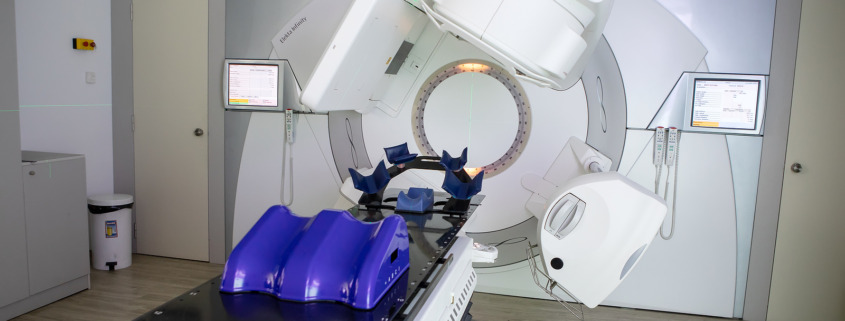How Could Radiotherapy Help Treat A Serious Eye Disease?
An unmistakable trend in the evolution of treatments available at a radiotherapy centre is that technological advances will not only allow for more effective treatments but will allow existing and highly effective techniques to be used in previously unthinkable areas of the body.
By far the most fascinating recent example of this is the study that explored the potential for one of the most groundbreaking and revolutionary radiotherapy treatments ever developed and widely used to transcend the brain and be used to treat perhaps the only other part of the body that requires even more precision.
This allows for one of the most common eye diseases in the world to receive an effective, accurate treatment that could help reduce the need for constant, uncomfortable treatments that are not always easily accessible.
Stopping Rapid Vision Loss
Two of the most common eye conditions that can lead to a permanent loss of eyesight are known as age-related macular degeneration (AMD). True to their name, it is a pair of conditions that are common whilst ageing that progressively affect the centre of a person’s vision.
There are typically two kinds, both of which affect hundreds of millions of people in the world. The first, known as “Dry” AMD, is caused by the build-up of drusen, a fatty substance that collects in the back of your eyes and causes eyesight degeneration over several years.
By contrast “Wet” AMD often progresses very quickly, and within weeks and sometimes even days it can cause significant loss of sight in an eye, something that can easily become permanent.
This is caused by tiny blood vessels that grow to an abnormal size in the back of the eyes and affect vision that way.
With Dry AMD, there is no medical treatment as of yet, but with Wet AMD, the primary course of treatment is the use of anti-Vascular Endothelial Growth Factor medication, often known as anti-VEGF injections or simply eye injections.
They work by blocking the production of the VEGF that causes blood vessels to grow and work for nine out of ten people who try them, even causing an improvement of vision in nearly a third of people who have the treatment.
However, there are two problems that make it less than ideal as a treatment despite how effective it is.
The first is that whilst its effectiveness can vary depending on how quickly VEGF activates in the eye, it is typically done at least every three months but can be as often as every month.
This is compounded by the fact that the eye injection needs to be applied directly to the eye. Whilst numbing compounds and a lot of care is taken to make sure it does not hurt, it is still quite uncomfortable, and some people defer treatment out of fear of the long-term cycle of injections.
As well as this, it can also be quite an expensive treatment to receive privately, with some estimates claiming it can cost £800 per injection, something that adds up quickly if they are needed monthly.
For a long time, radiotherapy was suggested as a solution, but it was difficult to find systems that could be as precise or accurate enough to be used within the eye.
Lars Leksell once said that no tool is too precise when it comes to brain treatments, but for a long time, even some of the most precise brain treatments such as Dr Leksell’s own Gamma Knife were not easily adapted for use in the eye.
However, a variation of the stereotactic radiosurgery method he pioneered did produce results in the landmark study, as it lowered the number of injections required compared to more conventional treatments for Wet AMD.
It worked, much like it does for brain lesions, by using multiple smaller beams that converge at a precise point, maximising the effect whilst limiting exposure to radiation.
This not only saves money on injections but is also more comfortable and lowers the risk of people withdrawing from treatment which could be vital to save their sight. The treatment’s cost itself is significantly lower than the cost of a single injection.
In one particularly notable success story, one person underwent radiosurgery and did not need another injection for two years, and as of June 2024 has not had an injection since.
The treatment itself is still in an early stage. The trial, whilst promising, also only involved 411 participants, which is far too small a sample size given how common the disease is. A wider trial would be required to confirm that these were statistically significant and not just the effect of an outlier.


